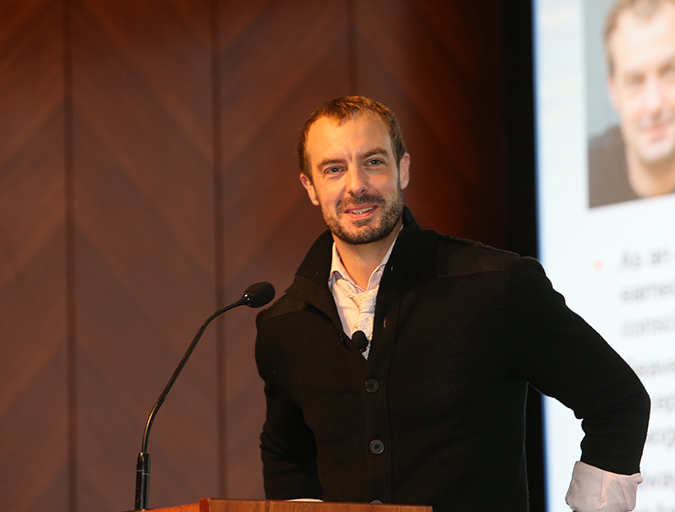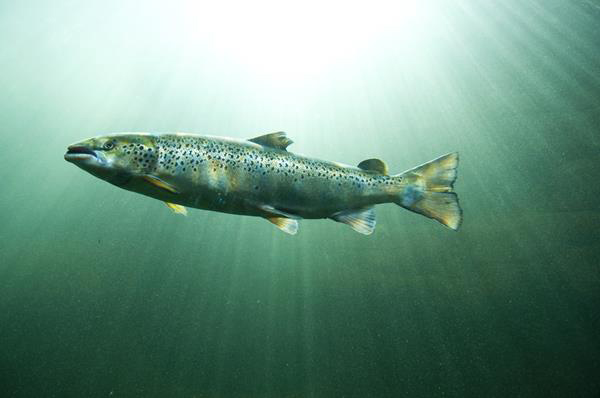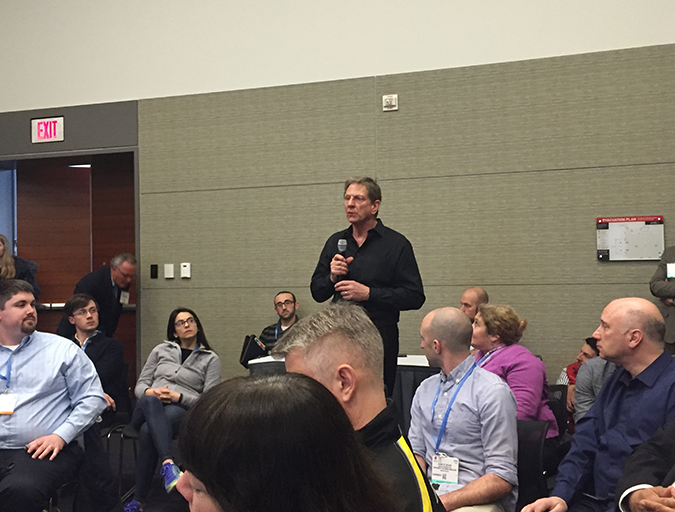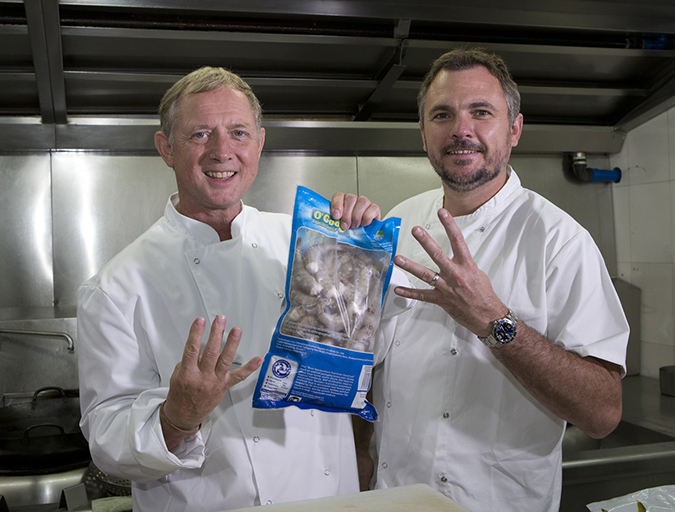Foodservice professionals ‘overwhelmed’ with sustainability and supply chain complexity

There is an information crisis looming in the foodservice world as it relates to seafood sustainability. Though the data is preliminary, it appears chefs are overwhelmed by the depth and breadth of information they must contend with when attempting to make an informed decision about buying sustainable seafood.
Before I get into that let me give you some background. As some of you know – I have been conducting research on the perspectives of working chefs when it comes to seafood sustainability as reported here in the Advocate earlier in the year (see link below).
https://www.aquaculturealliance.org/advocate/u-s-chefs-lack-seafood-sustainability-aquaculture-knowledge/
My curiosity is driven by a need to know more about how chefs think about seafood sustainability and how we can help shift behaviors toward a more sustainable future. When we consider seafood sustainability in restaurants it is smart to know a bit about who drives the decisions that lead to seafood making it onto a menu. Chefs influence all aspects of restaurant operation today more than ever, yet we know very little about their thought processes. Are they following trends? Are they genuinely fascinated by the products and their stories? Where do they get their information?
One could assume that if we know more about how chefs think, and the process they use when deciding what seafood to offer, we are more likely to positively influence them, to steer them to the right sources of both fish and information. Over the past eight months I have been investigating this phenomenon and the results of my initial study showed that chefs defer to suppliers when it comes to seafood sustainability.
This data was surprising and, like most quality research, led to another set of questions. Why do they defer to the supplier? What specific issues and concerns are being pushed back onto the supplier and the supply chain? What is the root cause of their hesitation to put this fish or that fish on the menu?
My experience with buyers and the decision makers that influence procurement is extensive. When I was president of the Coolfish division of Slade Gorton & Co., we purchased, processed and sold millions of pounds of seafood annually. The manufacturing plants operated like industrial-sized restaurant kitchens and the value-added products were (and still are) premium quality and center-of-plate worthy. As an executive focused on sales growth and innovation, I personally visited with buyers on a quarterly basis to gain insights and competitive advantage.
Visits to individual grocery stores during my travels revealed that folks working at the store level rarely understood what these certifications truly meant.
In addition to quality and creativity, retail buyers were heavily influenced by price, consumer preference and other prevailing trends. Though price was a leading factor, other macro trends like sustainability, safety and social integrity were critically important. Having third-party certification – be it SQF level 3, Best Aquaculture Practices or Marine Stewardship Council – in most cases proved critically important to major national retailers and broad-liners. However, my visits to individual grocery stores during my travels revealed that folks working at the store level rarely understood what these certifications truly meant.
Upon return to academia I made it my mission to investigate whether the same is true in the foodservice world – whether decision makers at the unit level are knowledgeable about sustainability and the certifications that have been attained. What surprised me was the lack of awareness and influence that eco-labels have on decision-making in the foodservice profession. As reported previously, only 60 percent of respondents of my initial survey were familiar with the BAP logo.
Peter Redmond, BAP Market Development VP, mentioned during our recent National Restaurant Association panel discussion that one could also see the results in reverse and celebrate the 60 percent who actually are familiar with the BAP logo. Redmond reminded me that it was just a short decade ago that familiarity in foodservice was probably half that number. This left me feeling encouraged in trying to understand what drives decisions related to sustainability in foodservice. Though my work is still ongoing, answers to these questions is beginning to emerge and much has to do with the complexity in species, terminology, sources and criteria in relation to seafood sustainability.
Simply put, chefs are pressed for resources more than ever and, it appears, don’t have the time to develop the extensive expertise to deal with the complexity of the issue. Though I can’t say for sure, at least not yet, it appears working chefs are overwhelmed with all the available information – and so strapped for time to evaluate it properly – so they defer to suppliers to fill this void.
This is an interesting and complex phenomenon that requires more study and one that puts tremendous pressure and responsibility on suppliers at a time when customers are more concerned than ever about where their seafood comes from. This is an information crisis for chefs that is being pushed back onto suppliers.
As mentioned, this research is still a work in progress but I am excited to continue the conversation. We must gather and use data about chefs’ decision-making processes to inform our efforts to improve seafood sustainability. This is my focus as a researcher now and part of what I plan to share in June when I speak at Seafood 1 on 1 in Providence, R.I., next month.
I hope you can join us in Providence and look forward to following up here in the Advocate later in the year with additional results. It will only become an information crisis if we fail to get ahead of it. In the meantime, let’s push forward.
Now that you've reached the end of the article ...
… please consider supporting GSA’s mission to advance responsible seafood practices through education, advocacy and third-party assurances. The Advocate aims to document the evolution of responsible seafood practices and share the expansive knowledge of our vast network of contributors.
By becoming a Global Seafood Alliance member, you’re ensuring that all of the pre-competitive work we do through member benefits, resources and events can continue. Individual membership costs just $50 a year.
Not a GSA member? Join us.
Author
-

James E. Griffin Ed.D., CEC, CCE
Associate Professor
Johnson & Wales University
8 Abbot Park Place
Providence, RI 02903 USA
Tagged With
Related Posts

Innovation & Investment
GOAL 2015 Day 2: The story we choose to tell
If Day 1 of GOAL 2015 was all about defense, the following day of the aquaculture industry’s leading global conference was about offense — exuding confidence that farming fish is the way to feed future generations, and determining how to tell the world its story.

Intelligence
Yellow Seafood Watch rating opens doors for Maine farmed salmon
Only farmed salmon from four regions in the world have earned a “best choice” or “good alternative” buy ranking from Seafood Watch. Maine-produced product is now an option for retailers and restaurant buyers who follow the Monterey Bay Aquarium’s influential recommendations.

Intelligence
Boston brainstorm: Getting consumers to embrace aquaculture
In a discussion format somewhat unique to the bustling halls of Seafood Expo North America, aquaculture backers lamented the lackluster U.S. consumer acceptance for farmed fish.

Intelligence
Images from GOAL 2016: Chefs collaborative
Before the Global Aquaculture Alliance's annual GOAL conference in Guangzhou, China, GAA market development manager for the United Kingdom, Mike Berthet, collaborated with some local chefs to prepare some of China's favorite seafood species.


